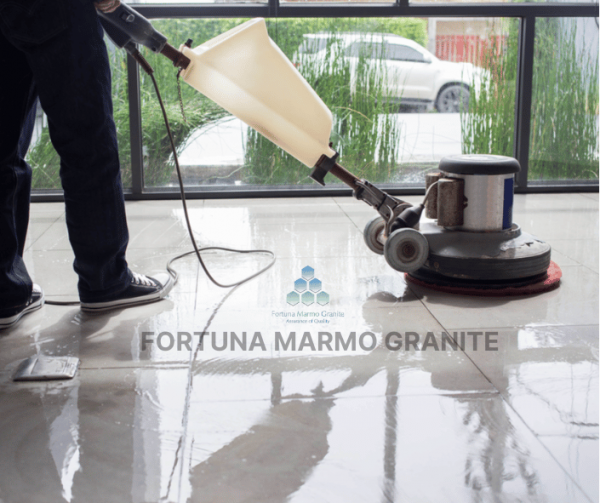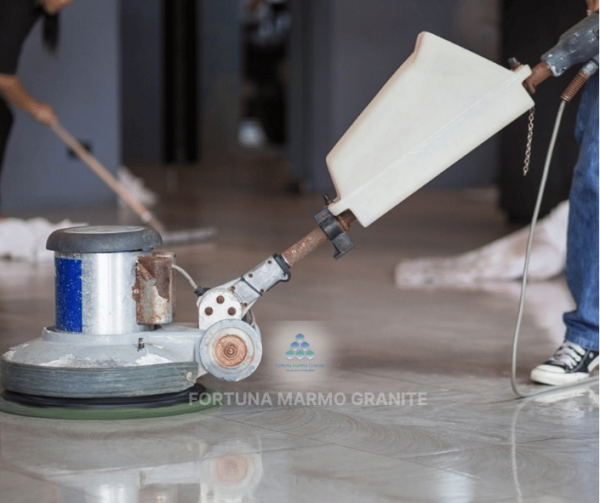"Mastering Marble Polishing: The Secrets to a Lasting Shine"
Marble has been a symbol of luxury and sophistication for centuries. From grand palaces to modern kitchen countertops, marble surfaces radiate a natural beauty that instantly captivates the eye. However, to maintain that pristine elegance, the stone requires regular care and polishing. Moreover, mastering the art of marble polishing not only preserves its stunning beauty but also enhances its durability. As a result, it remains a timeless investment that continues to add charm and value for years to come.


The Importance of Marble Polishing
Polishing marble does more than simply restore its shine. Moreover, it protects the surface from damage, prolongs its lifespan, and enhances its overall aesthetic appeal. Over time, foot traffic, spills, and daily wear can gradually dull marble surfaces. However, regular polishing not only removes these imperfections but also creates a protective barrier, thereby reducing the stone's vulnerability to stains and scratches
Tools and Materials You Need
Mastering marble polishing requires the right tools and materials. Here's what you'll need:
- Marble Cleaner: Moreover, A pH-neutral cleaner to remove surface dirt and grime.
- Diamond Polishing Pads: In addition, Varying grits from coarse to fine to gradually polish the surface.
- Polishing Powder: Yet, Designed specifically for marble, this powder enhances the stone's shine.
- Soft Cloths or Buffing Pads: Consequently, For applying polish and buffing.
- Sealer: In contrast, To protect the polished surface.
- Protective Gear: Significantly, Gloves and safety goggles to ensure safety.
Step-by-Step Marble Polishing Process
Step 1: Clean the Surface Thoroughly
Start by cleaning the marble surface to remove dust, dirt, and stains. Use a pH-neutral cleaner with a soft cloth or sponge, ensuring you don't scratch the surface. Rinse thoroughly with water and dry the surface with a soft cloth.
Step 2: Remove Surface Scratches and Etches
Inspect the marble for scratches or etching. For deeper scratches, use a diamond polishing pad with a lower grit (50 to 100) to smooth out the imperfections. Work in circular motions, applying light pressure. Gradually move to higher grits (200, 400, and up) to refine the surface.
Step 3: Apply Polishing Powder
Once the surface is smooth, apply a small amount of marble polishing powder to the area. Using a buffing pad or soft cloth, work the powder into the surface in circular motions. This process restores the marble's natural shine.
Step 4: Buff the Surface
After polishing, use a clean, dry buffing pad to remove any residue and bring out the marble's luster. This step is crucial in achieving a high-gloss finish.
Step 5: Seal the Marble
Finally, apply a high-quality marble sealer to protect the polished surface from moisture and stains. Follow the manufacturer's instructions, ensuring the sealer is evenly distributed. Let it dry completely before using the surface.
Maintenance Tips for Lasting Shine
Maintaining the shine of polished marble requires consistent care. Here are some tips to keep your marble looking flawless:
- Clean Spills Immediately: Marble is porous and can absorb liquids quickly, leading to stains.
- Use Soft Cloths and Mops: Avoid abrasive materials that could scratch the surface.
- Place Mats and Rugs: In high-traffic areas, mats can prevent wear and tear.
- Regular Polishing: Depending on the usage, polish your marble surfaces every 6 to 12 months.
Common Mistakes to Avoid
When polishing marble, it's easy to make mistakes that could damage the surface. Avoid these pitfalls:
- Using Acidic Cleaners: Vinegar, lemon juice, and other acidic substances can etch the marble.
- Skipping Grit Levels: Gradually increasing grit ensures a smooth, even finish.
- Over-Polishing: Excessive polishing can lead to a cloudy appearance.
Conclusion
Indian Marble Supplier Mastering marble polishing is an art that combines skill, precision, and the right techniques to bring out the natural beauty of this timeless stone. Consequently, From understanding the importance of regular maintenance to using proper polishing methods, every step plays a crucial role in achieving a brilliant, long-lasting shine. In addition, Whether you're enhancing the elegance of a marble countertop, floor, or staircase, the results are well worth the effort.
Moreover, At Fortuna Marmo Granite, we take pride in helping you preserve the beauty of your marble surfaces with expert guidance and high-quality materials. Trust in our experience to keep your marble looking flawless for years to come.

